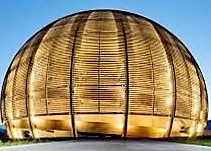Speaker
Description
In massive-star binary systems, upon reaching later stages of stellar evolution one star can expand as a giant and envelope its companion. The enveloped companion, here a neutron star, can begin to accrete matter. The angular momentum of the accreting material will result in the formation of an accretion disk. Accretion onto common-envelope-phase neutron stars can result in material ejected from the accretion disk having undergone burning near the neutron star’s surface [1]. Much about the nucleosynthesis that occurs in this system is not known, nor do we know what impact it has on galactic chemical evolution (GCE). In particular exploration of p-nuclides, an underproduced set of proton rich isotopes, is of interest. As such, further exploration of this system is required.
The equations which govern the accretion disk which forms in this scenario are not well constrained. The trajectories used in Keegans et al. (2019) are modelled from Popham et al. (1999) and are adapted from equations describing the interaction of a black hole with a helium core [1],[3]. Shakura and Sunyaev’s alpha disk solutions [4] are widely used to describe accretion disks, however they apply for an accretion disk dominated by gas pressure. At the small radii of accretion disks in this scenario, radiation pressure is thought to dominate and as such different equations must be employed [5]. The presented study builds on work by Keegans et al. (2019) [1]. We have taken Popham’s [3] equations and worked to solve them for the conditions of an accreting neutron star common envelope, with the aim of more accurately modelling this radiation dominated system. Details of the model will be presented, and their implications will be discussed with emphasis on nucleosynthetic impact of this system.
[1] Keegans J, Fryer CL, Jones SW, Côté B, Belczynski K, Herwig F, Pignatari M, Laird AM, Diget CA. Nucleosynthetic yields from neutron stars accreting in binary common envelopes. Monthly Notices of the Royal Astronomical Society. 2019;485(1):620-39.
[2] Battino U, Pignatari M, Travaglio C, Lederer-Woods C, Denissenkov P, Herwig F, Thielemann F,
Rauscher T. Heavy elements nucleosynthesis on accreting white dwarfs: building seeds for the
p-process. Monthly Notices of the Royal Astronomical Society. 2020 Oct;497(4):4981-98.
[3] Popham R, Woolsey S.E, Fryer C. Hyperaccreting Black Holes and Gamma-Ray Bursts. The American Astronomical Society.
[4] Shakura N.I, Sunyaev, R.A. Black holes in binary systems. Observational appearance. Astronomy and Astrophysics
[5] Accretion Power in Astrophysics, by Juhan Frank and Andrew King and Derek Raine, pp. 398. ISBN 0521620538. Cambridge, UK: Cambridge University Press, February 2002.
